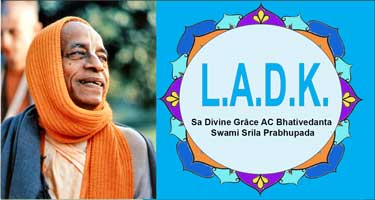
TRANSLATION
The twentieth branch of the Caitanya tree was Haridāsa Ṭhākura. His character was wonderful. He used to chant the holy name of Kṛṣṇa 300,000 times a day without fail.
PURPORT
Certainly the chanting of 300,000 holy names of the Lord is wonderful. No ordinary person can chant so many names, nor should one artificially imitate Haridāsa Ṭhākura's behavior. It is essential, however, that everyone fulfill a specific vow to chant the Hare Kṛṣṇa mantra. Therefore we have prescribed in our Society that all our students must chant at least sixteen rounds daily. Such chanting must be offenseless in order to be of high quality. Mechanical chanting is not as powerful as chanting of the holy name without offenses. It is stated in the Caitanya-bhāgavata, Ādi-līlā, Chapter Two, that Haridāsa Ṭhākura was born in a village known as Buḍhana but after some time came to live on the bank of the Ganges at Phuliyā near Śāntipura. From the description of his chastisement by a Muslim magistrate, which is found in the Sixteenth Chapter of the Ādi-līlā of Caitanya-bhāgavata, we can understand how humble and meek Haridāsa Ṭhākura was and how he achieved the causeless mercy of the Lord. In the dramas performed by Lord Caitanya Mahāprabhu, Haridāsa Ṭhākura played the part of a police chief. While chanting the Hare Kṛṣṇa mahā-mantra in Benāpola, he was personally tested by Māyādevī herself. Haridāsa Ṭhākura's passing away is described in the Antya-līlā of Caitanya-caritāmṛta, Eleventh Chapter. It is not definitely certain whether Śrī Haridāsa Ṭhākura appeared in the village named Buḍhana that is in the district of Khulnā. Formerly this village was within a district of twenty-four pargaṇas within the Sātakṣīrā division.

